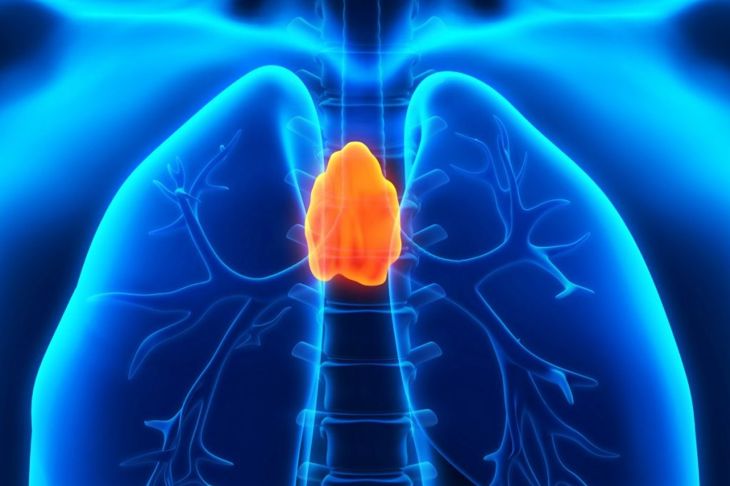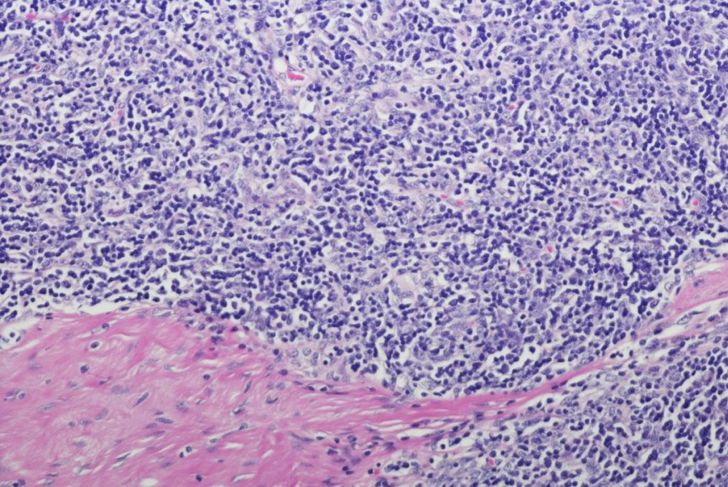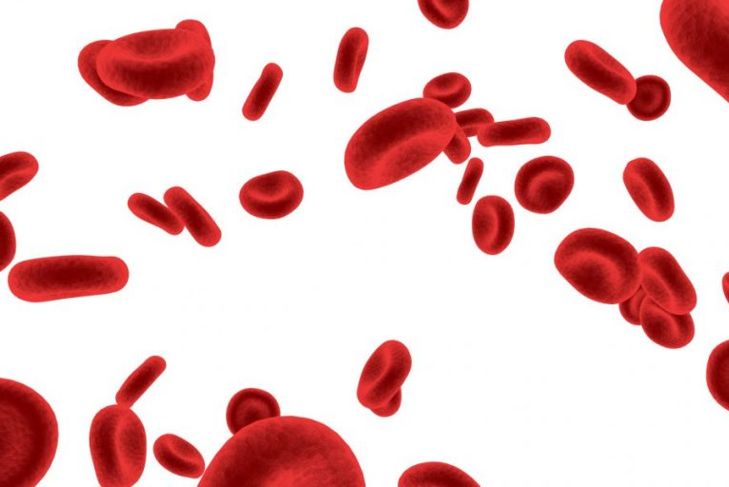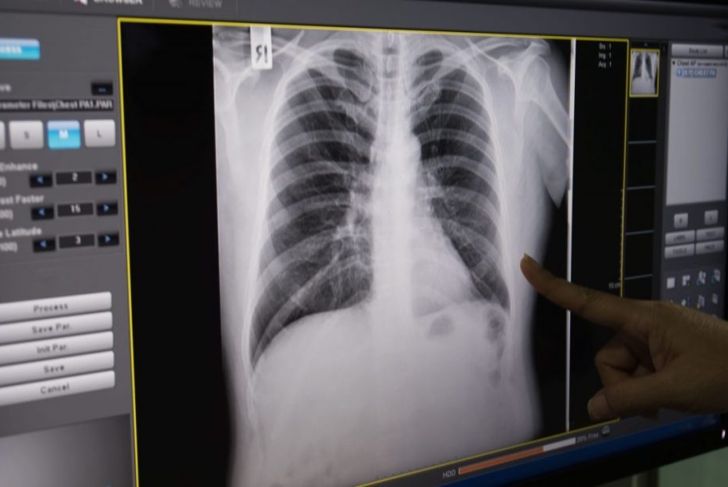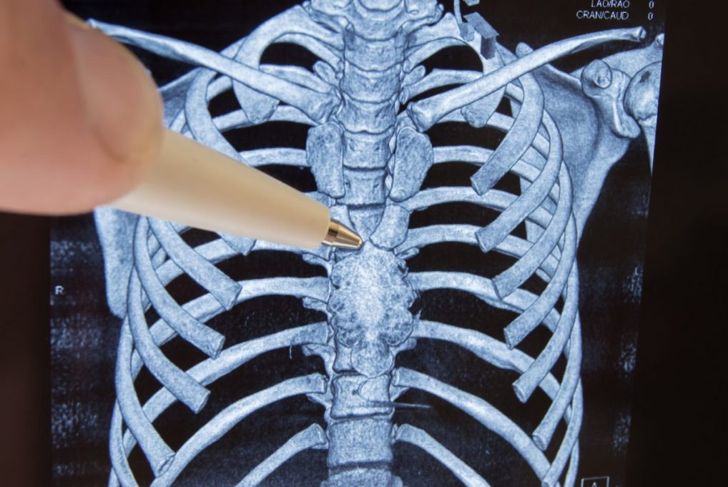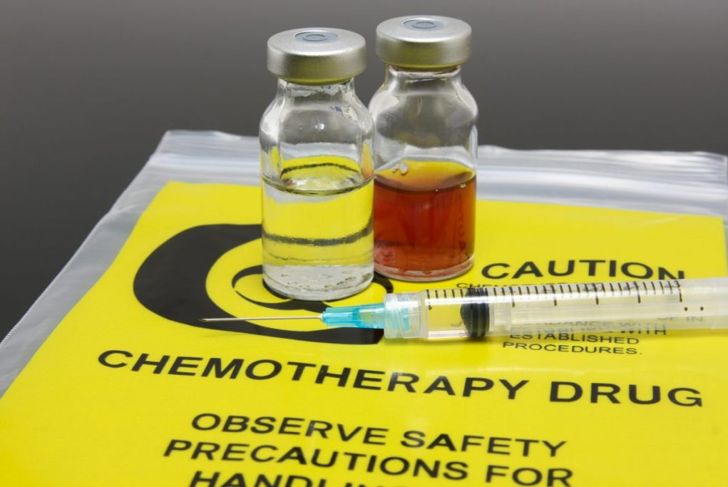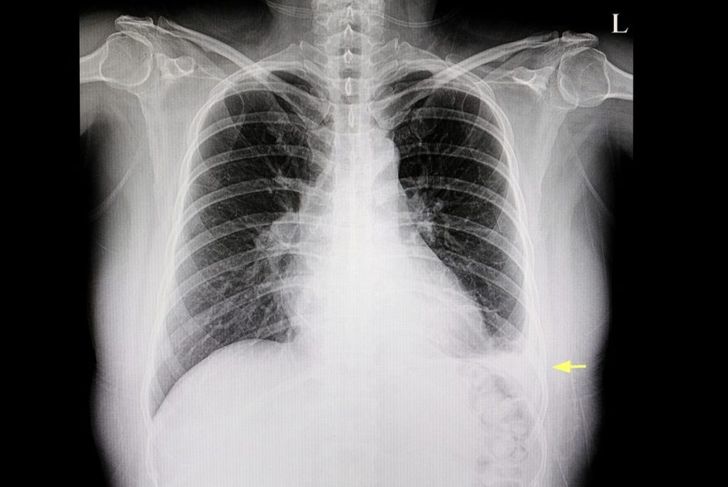Thymomas are rare tumors that grow from the epithelial cells of the thymus, a gland essential to the immune and endocrine systems. Less than one person in 1.5 million develops the disease — about 400 cases per year. Thymomas are malignant, even though they are slow-growing, because of their location and potential to invade vital spaces and cause complications. There are various types of thymomas.
What is the Thymus?
The thymus is a gland behind the sternum, in front of the pericardium. It gets blood from the internal thoracic and pericardiophrenic arteries, and the inferior thyroid. The thymus weighs between one and 1.5 ounces and is responsible for producing the hormone thymosin, which stimulates T cells that keep the immune system from turning on itself. Past puberty, the gland becomes inactive and shrinks, leaving behind bundles of cytoplasmic fibers called Hassall’s corpuscles.
The Myasthenia Gravis Connection
Myasthenia gravis (MG) is an autoimmune disease characterized by weakness and fatigue of voluntary muscles. It occurs when antibodies destroy or block the neurotransmitter acetylcholine, which causes muscles to contract and activates pain responses and a muscle-specific protein receptor called tyrosine kinase. It turns out half of the people with thymomas have MG, while 15% of people who have MG develop thymomas. Those with thymoma-associated MG develop inflammation in the heart muscles that increases the likelihood of cardiac-related death.
Sclerosing Thymoma
Doctors recognized sclerosing thymoma, a rare, fibrous tumor, for the first time in 1994 in a 65-year old man without symptoms. Despite the nodule on his chest, the man had no shortness of breath or chest pain. In other cases, the tumors were five to ten centimeters in diameter. Each had a hard, solid consistency like sclerotic tissue, which accounts for almost 90 percent of its the mass. In most cases, patients have the masses removed with no recurrence. Worldwide, there are fewer than 20 known cases.
Symptoms
Some people with thymoma may not experience any symptoms initially, but because this is a thoracic mass, signs will vary. Some may have bouts of anemia and frequent infections. Because of its proximity to the heart and lungs, individuals may experience pain or pressure in the chest area, and shortness of breath. Arm or facial swelling due to the mass pressing on associated nerves may also occur, along with dizziness, fatigue, and double vision.
Diagnosis
After a physical examination, the doctor will do a CT scan to see a 3D image of the organs and tissues. An MRI will provide detailed images and give an idea of the size of the thymoma, and a PET scan with a radioactive sugar injection helps medics see which cells are more active than others. Once these tests are complete, the pathologist may do a biopsy and a Chamberlain procedure, which requires inserting a tube through an incision next to the breastbone to draw lymph node samples. After this, the tumor is staged.
Masaoka-Koga Staging
Developed in 1981 by Akira Masaoka and updated by Kenji Koga in 1994, the Masaoka-Koga staging system is regarded as the best indicator of thymoma malignancy. Stage 1 indicates total encapsulation. Stages IIA and IIB indicate the thymoma has spread microscopically or macroscopically to the thoracic fatty tissue. Stage III indicates spread to the lungs, pericardium, and neighboring organs. Stages IVA and IVB indicate metastasis to the membranes of the lungs, pleura, and heart, or to the blood and lymph nodes.
Thymectomy
For early-stage thymoma, a median sternotomy is the best option; the surgeon splits the sternum, and removes the mass and surrounding tissue. If the thymoma is smaller, the doctor may use a less invasive laproscopic version of the procedure. For later stages, a complete thymectomy is no longer possible, and the process becomes a debulking procedure, where the surgeon removes as much of the thymoma as possible. If it has spread to the lung or the lung lining, the surgeon may remove both the lining and a portion of the lung.
Alternative Treatment Options
Other than surgical therapy, there are drug trials for thymoma treatments. Additionally, studies suggest thymomas are chemosensitive even at stage IV, while corticosteroid treatments may result in 12-month regression. Some researchers are testing the use of chemo and radiation or targeted drug therapy before surgery to increase the effectiveness of the chemo, especially in those with advanced thymoma. Immunotherapy, which involves cancer vaccines that stir the immune system to fight the disease, are also being studied.
Complications
Every surgery has post-operative complications; those who’ve had a thymectomy, two of the most dangerous are pleural effusion and myasthenic crisis. Pleural effusion is fluid in the lungs, which can affect breathing and could be a sign of infection. Myasthenic crisis is a life-threatening complication causing worsening muscle weakness. The complication requires endotracheal intubation or mechanical ventilation to help with breathing.
Survival Rates
The survival rate of thymoma depends on many factors, including its stage and treatment options. Those with Stages I and II have 5 and 10-year survival rates of 90% and 80% respectively. Individuals with Stage III have a five-year survival rate of approximately 60% and a ten-year survival of 30%, according to some studies. For those with Stage IV, ten-year survival rates are between 25 and 50%, depending on the source.

 Home
Home Health
Health Diet & Nutrition
Diet & Nutrition Living Well
Living Well More
More